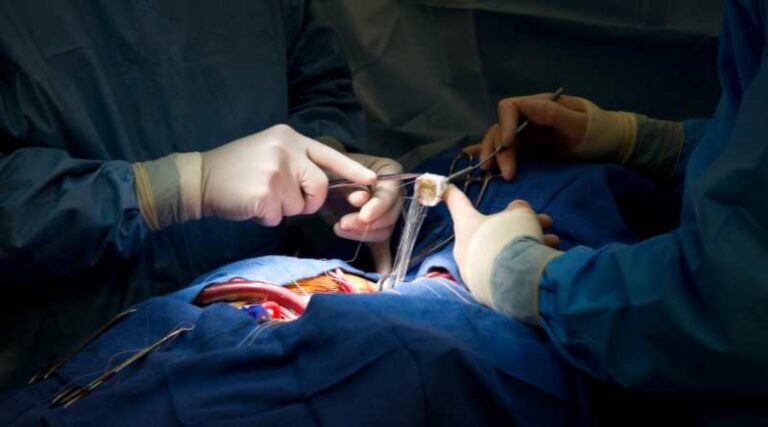A heart valve replacement is a procedure that replaces a damaged or diseased heart valve. The most common type of heart valve replacement is a bioprosthetic valve, which uses natural tissue from the patient’s body to create its structure (the leaflets).
The bioprosthetic material is typically made from cow or pig valves because they are more durable than human tissue and have fewer side effects than other materials used in bioprosthetic valves today such as porcine or bovine xenografts (also known as “porcine/bovine” valves) which contain porcine and bovine cells respectively rather than actual human tissue itself; these materials are still used occasionally but there has been controversy surrounding their efficacy due to concerns over animal rights and religious views on animal organ donation amongst others.
Heart Disease Symptoms
Palpitations
Palpitations are the most common symptom of heart disease. Palpitations are a sensation of irregular or fast heartbeat, which can be felt in the chest area and may occur when you stand up quickly or exercise vigorously. Your doctor will ask about your palpitations if they are sudden and severe enough to cause discomfort or pain, especially when lying down.
Pains in the Chest
If you have chronic chest pain that doesn’t go away with rest (typical symptoms include: pressure under your breastbone), then it’s probably best not to get overly concerned until more tests have been done to rule out other possible causes such as lung cancer or pneumonia—but make sure not to ignore any symptoms that persist longer than two weeks unless advised otherwise by a doctor
Heart Disease Causes
Heart disease is caused by a number of factors, including:
- High cholesterol (also known as hypercholesterolemia) can build up in the walls of arteries and block blood flow to your heart. This puts you at increased risk for heart attack or stroke.
- High blood pressure damages the walls of arteries, causing them to narrow and harden over time. You’re more likely to have high blood pressure if you have diabetes or are obese.
- Smoking increases your risk for heart disease because it causes the narrowing of blood vessels in the lungs and decreases your ability to carry oxygen-rich blood back into your body.
- Second-hand smoke also increases your risk for lung cancer, emphysema, and other breathing problems that can lead to heart disease.
- Obesity makes it harder for the body’s tissues such as fat cells (adipose tissue) work properly—and this affects how much energy is produced by these tissues during metabolism.
- Diabetes mellitus (DM) can damage nerves throughout multiple organs including those affecting circulation including kidneys which may lead ultimately result
What is a Heart-Valve Replacement?
A valve replacement is the replacement of a damaged or leaky valve with an artificial one. The most common type of heart valve replacement is a prosthetic mitral (mitral) valve. It allows blood to flow from your heart into your lungs and out again through an opening called the left atrium (LA), which receives blood from both ventricles.
The other major type of valve replacement is the mechanical ventricular septal (MVSR) device, which allows blood to flow in only one direction from right to left around both ventricles before entering LA through another opening called septum premium (SP). This can be done either alone or in combination with MVSR devices as well as other types such as tricuspid buttons/tubes, bicuspid buttons/tubes, etc., depending on what needs replacing
What is a Valve Mitral Regurgitation?
Mitral regurgitation, or MR, is a heart condition that occurs when the mitral valve does not close completely. This can cause blood to leak backward into the left atrium (the upper chamber of your heart). The fluid flows out into your lungs and down through your bloodstream, where it clots and causes chest pain.
Mitral regurgitation symptoms include:
- Chest pain that worsens with activity or coughing
- Shortness of breath
- Coughing up blood mucus frequently
What are the Symptoms and Signs of Valve Regurgitation?
In the heart, valves are folding flaps of tissue that regulate blood flow between chambers. When a valve is damaged or leaks, it no longer works properly and can cause many different symptoms. The most common symptom of valve regurgitation is shortness of breath after exercise or exertion (dyspnea). This can be caused by one or more valves leaking into each other when they don’t close properly during normal activity. Other symptoms include chest pain and fatigue that worsens at night time; fluid in your lungs (pleural effusion); swelling around your vocal cords; a cough that produces mucus; hoarseness; pneumonia-like illnesses like bronchitis with coughs productive enough to produce sputum every day for weeks on end (“spitting up”).
Diagnosis & Treatment
Heart disease may be diagnosed through a physical exam. If your doctor suspects a heart problem, he or she will order tests to check for blockages in the arteries to see if they’re narrowed or narrowed enough that they affect the blood flow. Other tests include an electrocardiogram (EKG), which records electrical signals from your heart; blood pressure readings; chest X-rays; and electroencephalograms (EEGs).
Treatment depends on what kind of condition you have and how severe it is. For instance, if your doctor finds that there’s plaque building up on an artery wall but no blockages present, he or she might recommend taking medications to thin out plaque buildup over time so that more oxygenated blood can circulate freely throughout each chamber of your heart—this approach is known as angioplasty with stenting.
An alternative treatment involves inserting a balloon into one of these areas with help from wire coils attached underneath it until it touches down inside one particular artery where there isn’t much room left unfilled by cholesterol deposits—this process is called coronary stenting because it helps widen open some small holes within large blockages caused by high cholesterol levels.”
Bioprosthetic Valve
The most common type of heart valve replacement is a bioprosthetic valve. A bioprosthetic (also known as artificial) heart valve is made from living tissue, which means it’s designed to last for many years and work as your own heart valves would.
Bioprosthetic valves are made from cow or pig tissue; these animals have been used for human medical research because they’re similar to humans in size, shape, and strength. Bioprosthetic valves may be made specifically for your body (like an artificial hip) or they may be generic designs that fit other people with different sizes and shapes.
Conclusion
Valve replacement surgery is a very complex procedure. The risks and benefits will depend on your specific health history, as well as other factors such as your age, lifestyle, and other medical conditions that may affect the long-term outcome of the procedure. We hope this article has helped you understand some of the basics of heart valve replacement surgery so that when it comes time for you to make an informed decision about what type of surgical solution would be best for your case, there are no surprises!
For more info Visit Us!













